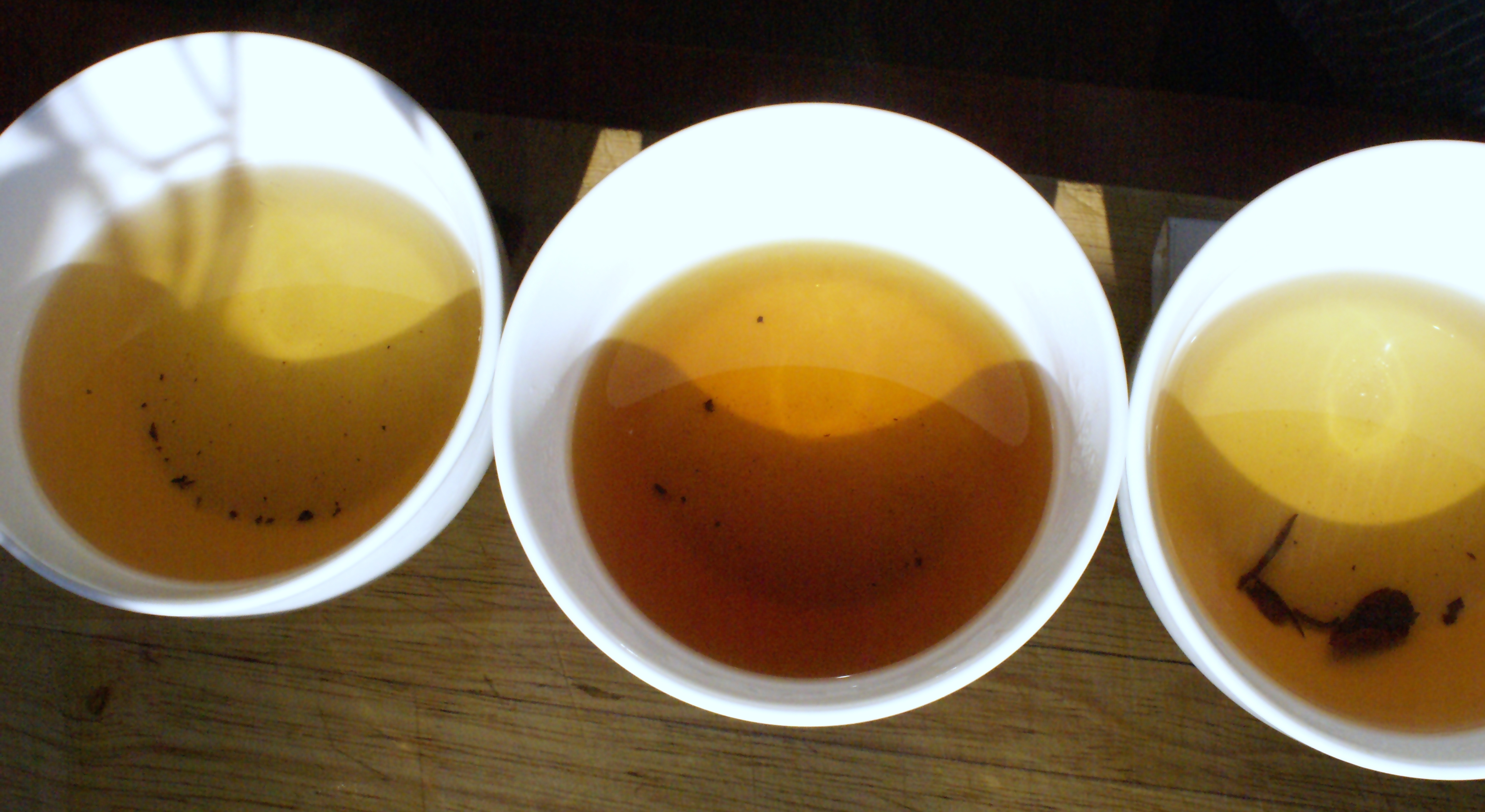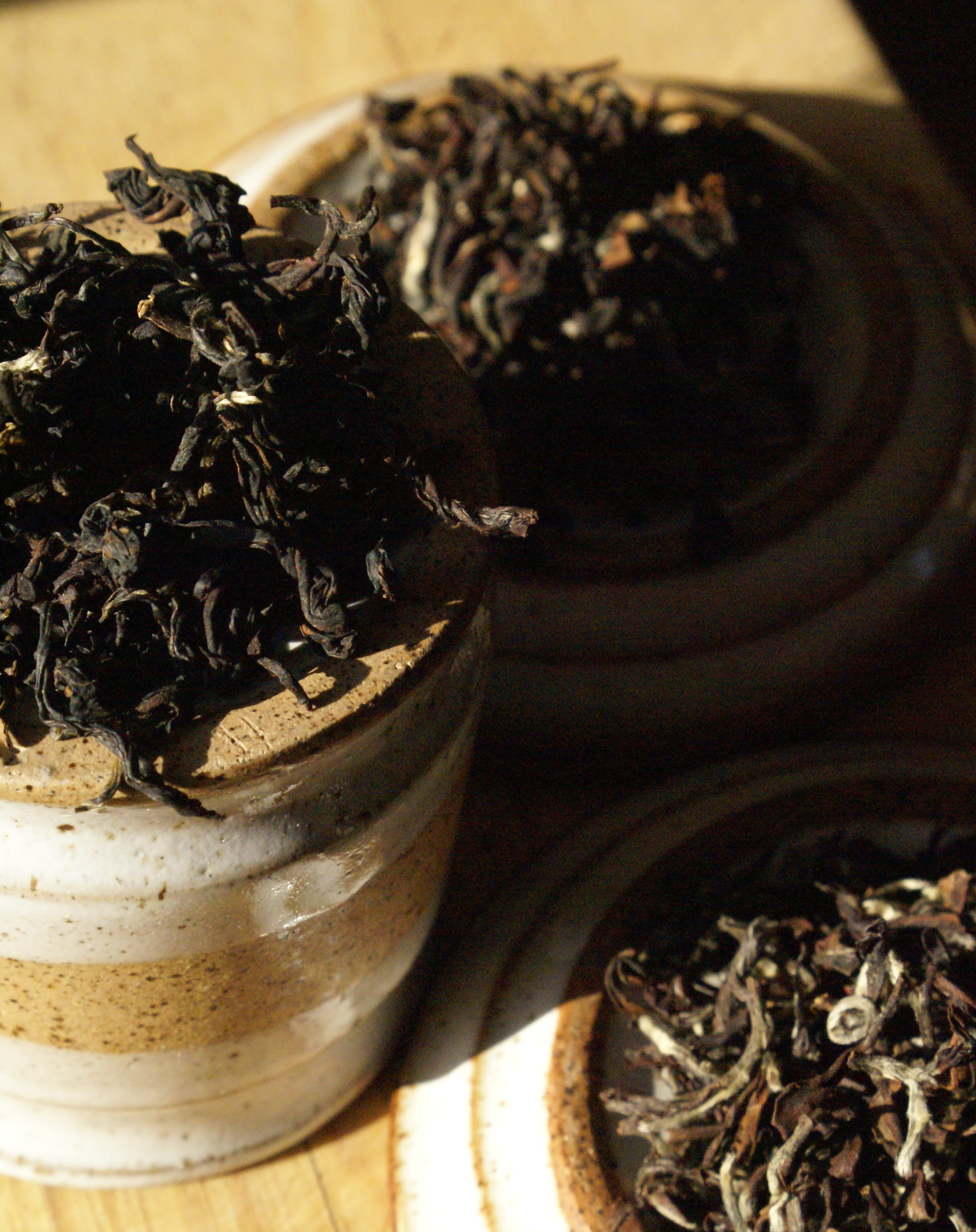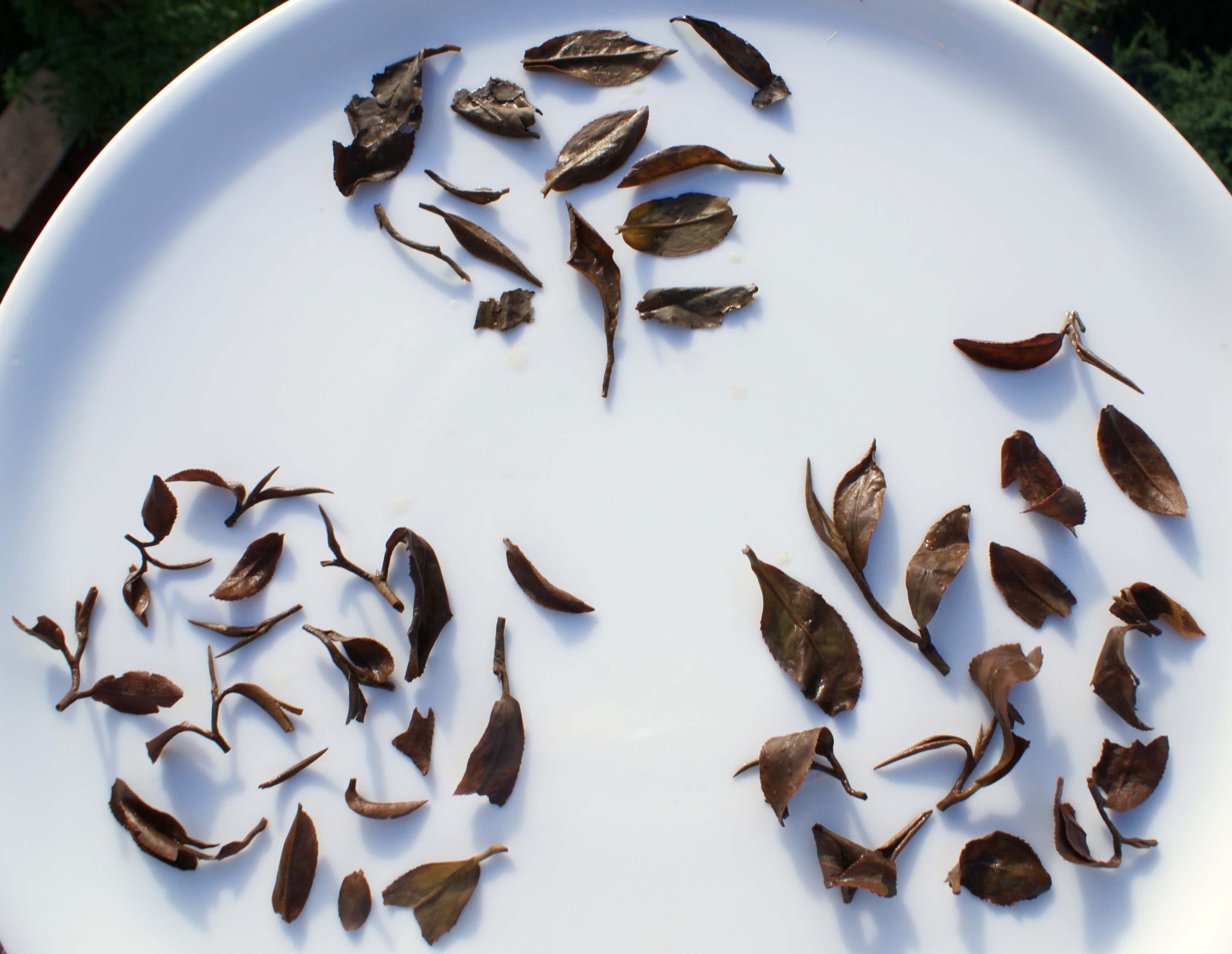Oriental Beauty vertical
Posted on 14 September 2011
I’m tasting one of my favourite teas today: Oriental Beauty (Baihao) from Taiwan. I shouldn’t really like it. It’s an irony OB is so good. It’s picked from low-lying, flat plantations, unlike the steep mountains used for really prestigious Taiwanese appellations such as Dayuling. Moreover, it’s a summer tea, much less reputed than spring tea with its delicately nuanced fragrances. And it’s basically made from spoilt leaves: bitten by tea jassids, it’s material that you’d normally reject when making ‘proper’ tea.
And yet I love it. I already analysed my own love for it in this blog entry. Today, the ultimate treat: three different vintages of OB from Teamasters, arguably the best source of artisanal Taiwanese tea on the web.
Stéphane Erler from Teamasters works with small growers in the best areas for OB: Hsin Chu and San Hsia in the north of Taiwan. His relationship is more than a simple buyer: he discusses the technicalities of each tea and suggests solutions. He has encouraged a grower to produce a sky-is-the-limit batch of hand-sorted Oriental Beauty that includes exclusively those leaves that were bitten by the tea jassid. It’s called the ‘Top’ grade. When I bought the 2008 vintage of this tea, it cost a hefty 100€ / 100, the most I ever paid for a young vintage oolong (the equivalent of a 750€ bottle of wine). And man, it was worth it.
I reviewed that 2008 Top two years ago, and rebrewed it today alongside a small sample of the 2010 Top I kindly received from Stéphane Erler. (See here for latter’s product info). I also tasted the 2009 ‘normal’ OB. The 2008 is just a tremendous tea. It’s a great emotion. It’s one of the best teas I’ve ever tasted, full stop. It’s fabulously aromatic, with notes of fresh and processed plums, cherries and apples, and gorgeous overtones of Christmas spices. No matter how you brew it, it’s always exhilarating. It is also a very consistent tea. The kaleidoscope of aromas is present throughout in the flavour: attack, mid-palate, finish and aftertaste. No hard edges, no moment of weakness. Perfection.
The 2010 ‘Top’ comes close. Perhaps it’s just the extra maturing that gives the 2008 the edge. The 2010 has similar aromas – if anything they are slightly darker: prunes rather than plums; dark grapes; molasses; coming just a bit closer to black tea in register. It’s spicy too, though less vividly so. It’s lovely on the palate, but perhaps less miraculously silky. But it’s a mightily fine tea.

Not the best photo ever but the 2009 (centre) is darker and chunkier; 2008 (left) and 2010 are similar.
The 2009 is very good as well, but it’s easy to see why the difference in price is like 1 to 3. It’s a heavier, chunkier tea relatively easy to overbrew. It can become quite tannic, à la black tea. While you can infuse the 2008 or 2010 for four minutes with no fear, it’ll be too much for the 2009. It also tends to oxidise once poured into the cup, and become quite bitter. These are notes from a crudely analytic tasting against better teas, but on its own it’s definitely a nice one. The asking price of 16€ is more than fair and it’s a tea I’ll always rebuy once my current stock is depleted.
Leaves for the standard 2009 are hand-picked so it’s the Gotha of tea anyway, but they’re not 100% selected for insect bites as in the ‘Top’. To sum up the differences between the two batches, Top is lighter and subtler. Just as for wine, prestigious, expensive, life-enhancing wine is often more elegant than cheaper, everyday wine. Less is more.
And that difference is visible in the leaves too. In dry state, it’s probably not so easy to see – I wouldn’t be sure – but the infused, expired leaves show a rather obvious difference. The leaves of the 2009 are much bigger, with fewer tips. Those of the 2010 are also slightly larger than the 2008, which perhaps explains why the former doesn’t exactly match the latter. Those tiny little curly leaves at the left of the above photo are responsible for one of the world’s very best teas.
Disclosure
2008 Top Oriental Beauty, 2009 OB – my own purchases, 2010 Top OB – tasting sample received from the vendor.



